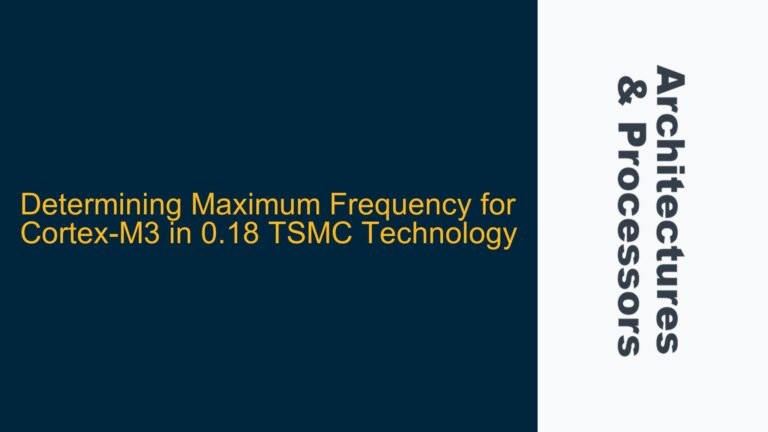HWDATA Routing and Slave Selection in AMBA AHB Architecture
The ARM AMBA AHB (Advanced High-performance Bus) protocol is a widely used on-chip communication standard for high-performance systems. One of the key aspects of AHB is its ability to handle multiple masters and slaves efficiently. The routing of data signals, particularly the HWDATA signal, is a critical component of this architecture. The HWDATA signal carries write data from the master to the selected slave during a write transaction. However, the mechanism by which HWDATA is routed to the correct slave is often misunderstood, especially in the context of how the multiplexer (MUX) and slave selection signals (HSEL) interact.
In the AHB protocol, the address phase and data phase are separated, which allows for pipelined transactions. During the address phase, the master broadcasts control signals such as HTRANS, HADDR, HWRITE, HPROT, HSIZE, HMASTLOCK, and HBURST to all slaves. These signals are used by the slaves to determine whether they are the target of the transaction. The HSEL signal, which is derived from the address decoder, is used to indicate which slave should respond to the transaction. Importantly, all slaves see the address phase signals, but only the selected slave (as indicated by HSEL) will respond during the data phase.
The HWDATA signal, which carries the write data, is sent directly to all slaves during the data phase. This might seem counterintuitive at first, as one might expect the HWDATA signal to be routed through a multiplexer, similar to how HRDATA (read data) is routed back to the master. However, the AHB protocol is designed such that the HWDATA signal is broadcast to all slaves, and only the selected slave (as determined by the HSEL signal) will actually use the data. This design choice simplifies the bus fabric and reduces latency, as there is no need for a multiplexer to route HWDATA to the correct slave.
Potential Misconceptions and Timing Issues in HWDATA Routing
One common misconception is that the HWDATA signal should be routed through a multiplexer before reaching the slaves. This misconception arises from the assumption that the slave selection process is not finalized until the data phase. However, in the AHB protocol, the slave selection is determined during the address phase, and the HSEL signal is used to indicate which slave should respond during the data phase. Since the HSEL signal is available before the data phase begins, there is no need to route HWDATA through a multiplexer.
Another potential issue is the timing of the HSEL signal. If the HSEL signal is not properly synchronized with the data phase, it could lead to incorrect behavior, such as a slave responding to a transaction that it was not intended to handle. This is particularly important in systems with multiple clock domains, where the HSEL signal might need to be synchronized to the clock domain of the slave. In such cases, care must be taken to ensure that the HSEL signal is stable and valid when the data phase begins.
Additionally, the AHB protocol allows for pipelined transactions, where the address phase of one transaction can overlap with the data phase of a previous transaction. This can lead to situations where multiple slaves are seeing the HWDATA signal simultaneously, but only one slave is actually selected to respond. In such cases, it is crucial to ensure that the HSEL signal is correctly aligned with the data phase to avoid conflicts or data corruption.
Implementing Correct HWDATA Routing and Verification Strategies
To ensure correct routing of the HWDATA signal in an AMBA AHB system, several steps should be taken during both the design and verification phases. First, the address decoder must be designed to generate the HSEL signal accurately and in a timely manner. The HSEL signal should be derived from the address phase signals (HADDR, HTRANS, etc.) and should be stable before the data phase begins. This can be achieved by ensuring that the address decoder logic is optimized for minimal delay and that any necessary clock domain crossing logic is properly implemented.
During the verification phase, it is important to thoroughly test the timing of the HSEL signal and its alignment with the data phase. This can be done using a combination of simulation and formal verification techniques. In simulation, test cases should be created to cover various scenarios, including back-to-back transactions, pipelined transactions, and transactions that cross clock domains. Formal verification can be used to prove that the HSEL signal is always correctly aligned with the data phase and that no timing violations occur.
Another important aspect of verification is to ensure that the HWDATA signal is correctly handled by the slaves. This can be done by creating test cases that verify the behavior of each slave when it is selected and when it is not selected. For example, a test case could be created where a master performs a write transaction to one slave while another slave is also seeing the HWDATA signal. The test should verify that only the selected slave responds to the transaction and that the other slave ignores the HWDATA signal.
In addition to simulation and formal verification, it is also important to perform timing analysis to ensure that the HWDATA signal meets the setup and hold requirements of the slaves. This can be done using static timing analysis tools, which can identify any potential timing violations and help to optimize the design to meet the required timing constraints.
Finally, it is important to document the design and verification process, including the rationale for the routing of the HWDATA signal and the steps taken to ensure correct operation. This documentation should be reviewed by the design and verification teams to ensure that all potential issues have been addressed and that the design is robust and reliable.
In conclusion, the routing of the HWDATA signal in an AMBA AHB system is a critical aspect of the design that requires careful consideration and thorough verification. By understanding the protocol, addressing potential misconceptions, and implementing robust verification strategies, designers can ensure that their AHB-based systems operate correctly and efficiently.






